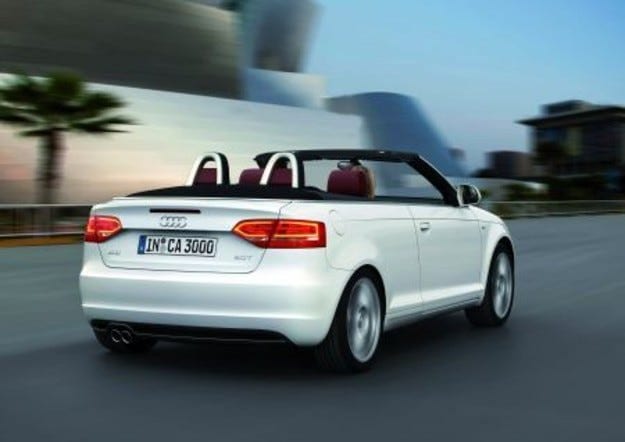
Test drive Audi A3 Cabriolet: Open season

Convertibles in Audi TT and A4 will soon have a little brother. Will the four-seater A3 Cabriolet change the status quo in the compact convertible class? First A3 test with a traditional textile roof.
The open A3 will carry the face of a modified compact model that the Ingolstadt-based Bavarians are planning for the summer of 2008. Unlike many other convertibles in the same segment, the Ingolstadt representative will again rely on the classic textile roof while remaining faithful. traditions are strictly observed in these latitudes.
Classic choice
Soft roofing, which many conservatives consider the only suitable solution for folding structures, is the work of the German specialist Edsch. The main (and sufficient) argument of the supporters of this idea is the lack of elegance in the proportions of hard folding roofs when installed in compact car bodies. The 15 colors of lacquer and the three colors (blue, red and black) of the tarpaulin wrapping the guru provide 45 possibilities for customizing the exterior, among which the more contrasting combinations are particularly impressive.
The Audi A3 Cabrio offers two versions of its "hat" - a standard two-layer semi-automatic version that requires a few manual manipulations, and a fully automated three-layer version with better soundproofing. The last acoustic guruk opens in nine seconds and closes in eleven, making it one of the fastest on the market. The device saves a few valuable seconds thanks to the ability to activate on the move at speeds up to 30 km/h.
Feeling of freedom
Outdoor travel in the new A3 Convertible can make you feel truly free – the A-pillars and windshield frame keep a considerable distance from the pilot's and co-pilot's heads. There was no trace of the reckless crashing of the windshield into the "territory" reserved for the roof, which is characteristic of modern coupe-cabriolet. Four fully hidden side windows and an extremely efficient but unfortunately additional bulkhead mounted above the rear seats regulate the amount of fresh air entering the cabin.
To maintain the dynamic performance of the A3, the convertible's chassis has been retuned to retain its agility - a loaded A3 moves confidently and surprisingly steadily through corners before entering predictable and safe marginal mode. The ESP stabilization program prevents loss of control due to an attempt to maneuver at too high a speed. At the same time, a stiffer suspension response becomes evident - compared to some sporty performance devoid of any comfort, but this is not in doubt.
In fact, the A3 Cabrio is also suitable for long journeys, in which a maximum of four people of average height can take part. In the front row, the seats are perfectly comfortable, in the back seat you can also move around safely, despite the limited space for legs and elbows - even the backrest angle is precisely measured here.
At the beginning of its life cycle in April, the Bavarian convertible will be equipped with two diesel and two gasoline turbo engines. Although only the 1,9-liter diesel has a common rail injection system, while the 30-liter still uses the noisier yet ultra-fuel efficient pump-injector technology, Audi marketers are forecasting a second largest market share (2.0%). than the more modern 25 TDI (10%). The two-liter forced-fill petrol is in the forecast for about 1,8%, and the 35-liter TFSI is the best-selling model in the model range with a share of XNUMX%.
Attractive engines
The top modification 2.0 TFSI is especially recommended, in which, despite the turbocharger, there is practically no delay in gas supply, on the contrary, the front wheels drive the car forward confidently and with honed power. The 2.0 TDI shouldn't be underestimated either - it's the pinnacle of discipline in a relaxing, leisurely ride, punctuated by vigorous overtaking and a return to relaxed drifting.
Let's finally get back one more time to the front of the A3. There is already a special buffer zone here, the purpose of which is to protect pedestrians in case of unwanted contact. The deformation zone extending above the engine and in the area of the wings, on the one hand, “raises” the front end by a few millimeters, and on the other hand, places an additional emphasis on LED lighting.
Text: Christian Bangeman
Photo: Ahim Hartmann
